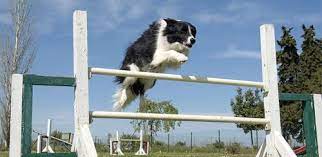What is Border Collie Collapse


Border Collie Collapse is a condition that affects some Border Collies, causing episodes of muscle weakness or collapse during intense exercise or excitement. This article explores the causes, symptoms, diagnosis, treatment, prevention, and management of Border Collie Collapse, providing valuable insights for dog owners and enthusiasts.
What is Border Collie Collapse?
Border Collie Collapse, also known as exercise-induced collapse (EIC), is a genetic disorder primarily found in Border Collies. It is characterized by the sudden onset of weakness or collapse during periods of intense exercise or excitement. The affected dog may exhibit wobbling, leg weakness, or even complete collapse. These episodes typically last for a few minutes and can be distressing for both the dog and its owner.
Symptoms of Border Collie Collapse
The symptoms of Border Collie Collapse usually manifest during strenuous activities such as agility training, herding, or playing fetch.


The affected dog may experience a loss of coordination, hind limb weakness, or dragging of the hind limbs. Some dogs may exhibit trembling, disorientation, or even lose consciousness temporarily. These symptoms are often transient and resolve on their own after a short period.
Causes of Border Collie Collapse
Border Collie Collapse is caused by a mutation in a gene called DNM1. This gene is responsible for regulating the release of neurotransmitters in the brain.


The specific mutation disrupts the normal functioning of the gene, leading to abnormal communication between nerve cells during intense exercise. This disruption results in the collapse of muscle function.
Diagnosis of Border Collie Collapse
The diagnosis of Border Collie Collapse is primarily based on the clinical signs exhibited by the dog during episodes of collapse. It is essential to rule out other conditions that may have similar symptoms, such as epilepsy or cardiac disorders. Genetic testing can confirm the presence of the DNM1 mutation, which is highly associated with Border Collie Collapse.
Treatment and Management of Border Collie Collapse
Currently, there is no cure for Border Collie Collapse. The primary focus of treatment is on managing the condition and reducing the frequency and severity of episodes.


It is crucial to avoid triggering activities or environments that may induce collapse. Gradual and controlled exercise programs, along with proper hydration and rest breaks, can help manage the condition effectively.
Prevention of Border Collie Collapse
As Border Collie Collapse is a genetic disorder, prevention lies in responsible breeding practices. It is crucial for breeders to perform genetic testing on their breeding stock to identify carriers of the DNM1 mutation.


By selectively breeding only non-carrier dogs, the incidence of Border Collie Collapse can be significantly reduced in future generations.
Living with a Border Collie Prone to Collapse
Living with a Border Collie prone to collapse requires understanding and careful management. It is important to create a safe and controlled environment for the dog, ensuring that exercise is gradually increased and closely monitored. Regular check-ups with a veterinarian are necessary to assess the dog’s overall health and provide guidance on managing the condition.
Research and Studies on Border Collie Collapse
Researchers and veterinarians have dedicated significant efforts to studying Border Collie Collapse to better understand its causes, mechanisms, and potential treatment options. Various studies have been conducted to investigate the genetic basis of the condition and its prevalence among different populations of Border Collies.


Genetic research has revealed the association between Border Collie Collapse and the DNM1 gene mutation. This discovery has paved the way for genetic testing, allowing breeders to make informed decisions regarding their breeding programs. The identification of carriers and affected dogs helps prevent the spread of the mutation and reduce the incidence of the condition in future generations.
Moreover, ongoing research aims to unravel the specific physiological mechanisms that lead to collapse during exercise. By studying the abnormalities in neurotransmitter release and nerve cell communication, scientists hope to develop targeted therapies that can mitigate the symptoms or potentially reverse the effects of the condition.
Additionally, researchers are investigating the potential impact of environmental factors on the manifestation and severity of Border Collie Collapse. Factors such as exercise intensity, heat, stress, and excitement levels are being examined to determine their influence on the occurrence of collapse episodes. This knowledge can contribute to the development of guidelines and recommendations for managing and preventing episodes.
See also: What age do Border collies die
The collaborative efforts of researchers, veterinarians, and breeders have resulted in an increased understanding of Border Collie Collapse and its implications. Through ongoing research, the goal is to improve the lives of affected dogs and provide valuable information to owners and breeders.
Border Collie Collapse vs. Other Conditions
It is essential to differentiate Border Collie Collapse from other conditions that may present similar symptoms. One such condition is epilepsy, which can also cause episodes of weakness or collapse. However, there are distinct differences between the two.
Unlike Border Collie Collapse, epilepsy is characterized by abnormal electrical activity in the brain, leading to seizures. Seizures can manifest as generalized convulsions or focal episodes involving specific body parts. Epileptic seizures may occur spontaneously, without any specific trigger such as exercise or excitement.
On the other hand, Border Collie Collapse episodes are directly related to intense exercise or excitement. The collapse is not accompanied by seizures but rather by temporary weakness and loss of coordination. It is crucial to consult with a veterinarian for an accurate diagnosis and appropriate management of the condition.
Conclusion
Border Collie Collapse is a genetic condition that affects some Border Collies during periods of intense exercise or excitement. It is characterized by temporary episodes of weakness or collapse, which can be distressing for both the dog and its owner. While there is no cure for Border Collie Collapse, responsible breeding practices, genetic testing, and careful management can help mitigate the impact of the condition.
Understanding the causes, symptoms, and management strategies for Border Collie Collapse is crucial for dog owners, breeders, and veterinarians. Ongoing research and studies continue to provide valuable insights into the condition, improving our knowledge and contributing to better care and prevention measures.
FAQs about Border Collies Collapse condition


Here are the frequently asked questions about the Border Collies collapse condition:
Can Border Collie Collapse be completely cured?
Currently, there is no cure for Border Collie Collapse. However, with appropriate management and lifestyle adjustments, the frequency and severity of episodes can be reduced.
Is Border Collie Collapse a common condition among all Border Collies?
Border Collie Collapse is not present in all Border Collies. It is primarily found in specific lines or individuals with the DNM1 gene mutation. Genetic testing can help identify carriers and affected dogs.
Can Border Collie Collapse be prevented through breeding practices?
Responsible breeding practices, including genetic testing and selective breeding, can significantly reduce the incidence of Border Collie Collapse in future generations.
See also: How many hours should a border collie sleep
Are there any specific triggers for Border Collie Collapse episodes?
Border Collie Collapse episodes are often triggered by intense exercise or excitement. Activities such as agility training, herding, or prolonged play sessions can induce episodes in susceptible dogs. It is important to monitor the dog’s activity level and provide appropriate rest breaks to prevent triggering an episode.
Can other dog breeds experience collapse during exercise?
While Border Collie Collapse is primarily associated with Border Collies, there have been rare reports of similar episodes in other breeds. However, the underlying causes and mechanisms may differ, and each breed should be evaluated individually if such episodes occur.
Now that you have gained a comprehensive understanding of Border Collie Collapse, its causes, symptoms, diagnosis, management, and ongoing research, you can make informed decisions regarding the care and well-being of your Border Collie. By staying informed and implementing appropriate measures, you can ensure a happy and healthy life for your beloved pet.
Remember to consult with a veterinarian if you suspect your Border Collie may be affected by Border Collie Collapse. They can provide guidance, support, and tailor a management plan specific to your dog’s needs. With proper care and understanding, you can help your Border Collie thrive and enjoy a fulfilling life.




